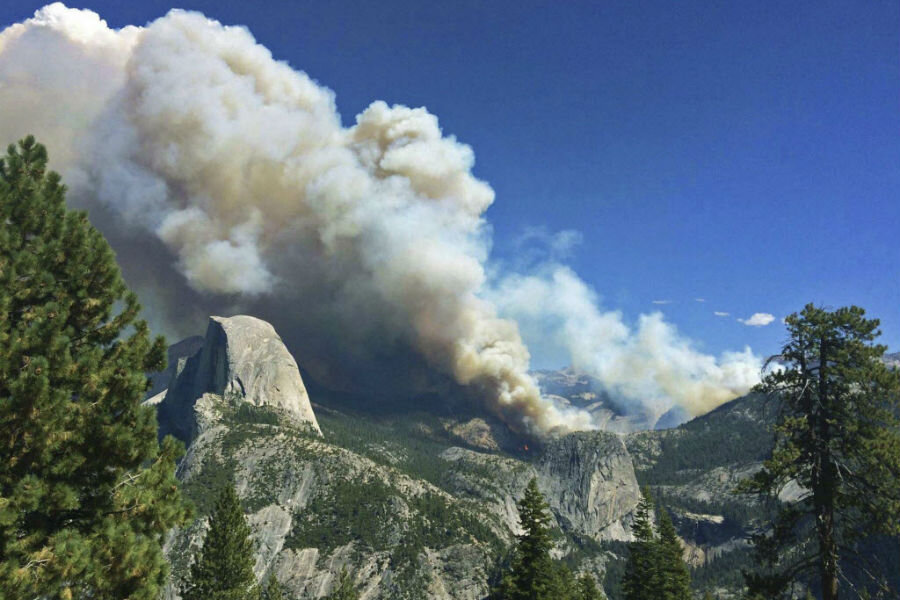Yosemite wildfire scorches backcountry as firefighters scramble to contain blaze
Loading...
The Meadow Fire that prompted the evacuation of 185 visitors to Yosemite National Park over the weekend has since nearly quadrupled in size, consuming at least four square miles of backcountry.
The fire began seven weeks ago when lighting struck between Little Yosemite Valley and Half Dome. Firefighters had been letting the blaze burn as part of an effort to restore the natural fire cycle within the park. However, when winds carried the blaze toward the trail leading to the popular Half Dome, park officials evacuated 85 hikers from atop the rock formation via helicopter.
“We just got unbelievable crazy winds and unexpected hot conditions,” Tim Ludington, the park’s chief of roads and trails, told the Fresno Bee.
Another 100 visitors were evacuated from Little Yosemite Valley. The park remains open, but trails leading to Half Dome, the Little Yosemite Valley area, Merced Lake, Sunrise High Sierra Camp, Clouds Rest, and Echo Valley are closed.
Fire has played a major role in the history of Yosemite. Massive conflagrations helped shape the park long before European explorers stumbled across the area's resplendent Ponderosa pines and giant sequoias. For much of the 20th century, park managers and visitors took on the role of suppressing fire in effort to be good stewards of the land.
However, those decades of fire suppression are thought to have altered park vegetation and wildlife habitats. Some trees, such as the Giant Sequoia, actually need fire to reproduce.
In recent decades, the National Park Service has allowed more natural fires to burn and even set prescribed fires in an effort to restore the natural fire cycle of the ecosystem. Carefully managed fires are thought to help maintain healthy meadow habitats and to help reduce heavy fuel loads that present additional hazards during uncontrolled blazes.
The current fire management plan for the park aims to restore the park ecosystem within 15 to 20 years, largely through management of both prescribed and natural wildland fires.
The past few years have brought particularly active wildfire seasons. As of Aug. 20, wildfires scorched more than 2.6 million acres of land across the country this year, the Monitor’s Dan Wood reported. The previous two years saw more than 6.5 million acres charred by late summer.
Firefighters have been battling another blaze about 15 miles southwest of the park near the town of Mariposa, Calif., had previously prompted the evacuation of 300 homes. That 300-acre wildfire has been 75 percent contained and the evacuation order for the area has been lifted.
This report includes material from Reuters and the Associated Press.








